Thank you for visiting! By the way… any links on this page that lead to products on Amazon and other stores/partners are affiliate links Aquarium Store Depot earns a commission if you make a purchase.
Are you struggling with finding a plants that will grow in your betta tank?
In this blog, we share the best plant choices for a betta tank, from hardy plants to mosses. I’ll even go over fake plants if you choose not to keep any of these
With over 25 years of experience in the aquarium hobby, I’ve assisted countless clients, hobbyists, and readers like you in overcoming the brown thumbs. I’ve personally grown several of these plants in betta tanks I’ve kept and seen others in real world scenarios to determine the best plants for betta fish tanks.
The Top Picks
Let’s cut to the chase with my top picks. The best plant to try for a betta tank is easily the Java Fern. It is available every, you can even get some cuttings from another betta keeper. They are very adaptable plants and easy to maintain.
Next up we have Anubias. This plant grows stately leaves and is a slow grower, which means you won’t have to prune as much. Like the Java Fern, it is adaptable and hardy. Easy to find as well. The budget option would be the Marimo Moss Balls. While not as easy to find now, it can fit in the smallest of spaces and does a good job of filtering the tank.
The 11 Best Plants For Betta Fish
Let’s go over the best plants for betta fish below. I included a video from our channel for visual learners. I go into further detail below. If you like our content, give us a like and sub on our YouTube channel.
1. Java Fern
Java Fern is one of the easiest and hardiest live plants you can purchase
- Scientific Name: Microsorum pteropus / Leptochilus pteropus
- Common Name: Java Fern
- Origin: Widely distributed in Southeast Asia
- Skill Level: Easy
- Light Level: Low-Moderate, 40-125 PAR (Umols)
- Temperature Range: 64 – 82°F
- Flow Rate: Low, Moderate
- CO2 Requirement: No
Java Fern is an amazing first time planted tank owner. A betta fish tends to be one of the first fish a beginner owns. Java Fern is also a great beginning plant that will be forgiving to many of the newbie mistakes one can make.
Java fern is a great low light / low energy plant tolerates a wide temperature range and requires no CO2 to grow. It is readily available at most stores and is very affordable. It is the best plant to start with if you want to decorate a betta fish tank and still have a very hardy plant.
2. Anubias
Hardy, forgiving and easy to grow. The Anubias Nana is your ticket to the incredible hobby that is aquascaping!
- Scientific Name: Anubias barteri var. nana
- Common Name: Dwarf anubias, nana anubias, petite anubias
- Origin: Cameroon, equatorial West Africa
- Skill Level: Easy
- Light Level: Low to medium light, 40-125 PAR (Umols)
- Temperature Range: 72 – 82 F
- Flow Rate: Low, Moderate
- CO2 Requirement: No
Anubias is an amazing plant that not only offers a forgiving plant, but has leaves large enough to serve as a hammock. It also comes in multiple varieties and leaf sizes where you purchase the size most appropriate for your betta tank.
Anubias Barteri is the traditional Anubias with large leaves while Anubias Nana and Anubias Petite are best used in smaller fish tanks. This aquatic plant is very forgiving, will grow in low light, and grows with no CO2. The main issue with this plant is that it grows slow. Because it grows slow, it is prone to algae overtaking its leaves. Consider wiping algae from its leaves or recruiting algae eaters to maintain its health.
3. Marimo Moss Balls
An easy to keep and hardy aquarium plant. They are small and fit in any aquarium setup. Provides good food source and will soak up nutrients
- Scientific Name: Aegagropila linnaei
- Common Name: Moss balls
- Origin: Japan
- Skill Level: Easy
- Light Level: Low to medium light, 40-125 PAR (Umols)
- Temperature Range: 72 – 78 F
- Flow Rate: Low, Moderate
- CO2 Requirement: No
Looking for an easy-to-care-for aquatic plant (well actually it isn’t really a plant – it’s algae)? Look no further than the Marimo Moss Ball! This spherical algae ball thrives in any aquarium and grows at a rate of just 5mm per year. As if that wasn’t low maintenance enough, the Marimo Moss Ball is also extremely tolerant to most water conditions.
Being algae, it does an amazing job of acting as a natural filter for your Betta tank. It will consume ammonia, nitrites, and nitrates in the aquarium. You also can cut them into mats and glue to driftwood and rocks for a moss like appearance. It’s a great plant (algae) to try! So why not add a splash of greenery to your underwater oasis?
4. Cryptocoryne Wendtii
A great low tech plant for multiple aquascape types and setups. Forgiving and hardy, the Cyrptocoryne Wendtii is a great introduction to rooted plants!
- Scientific Name: Cryptocoryne wendtii
- Common Name: Wendt’s water trumpet, Wendt’s cryptocoryne, Wendt’s crypt
- Origin: Sri Lanka, Asia
- Skill Level: Easy
- Light Level: Low-high, 50-200 PAR (Umols)
- Temperature Range: 68 – 82 F
- Flow Rate: Low, Moderate
- CO2 Requirement: No
Cryptocoryne Wendtii is one of the few rooted plants that work well in Betta tanks. It is a great option for beginners. This easy to grow plant grows at a moderate rate, and can be grown both submerged and emersed. Propagation is also easy – done by simply cutting off new plantlets growing from the mother rhizome.
Cryptocoryne Wendtii can also grow in a variety of light doing well in high low and low light environments. If you are looking for a rooted plant, this is once of the best suited plants for a betta fish.
5. Water Sprite
Readily available and easy to grow. This fast growing plant will soak up nutrients and thrive in low light
- Scientific Name: Ceratopteris thalictroides
- Common Name: Water Sprite, Indian Water Fern, Oriental Water Fern, Water Stag-horn Fern
- Origin: Northern Australia, Southeast Asia, India, East Africa, and Central America
- Skill Level: Easy
- Light Level: Moderate 30-80 PAR (umols)
- Temperature Range: 72 – 82 F
- Flow Rate: Low
- CO2 Requirement: No
Water Sprite is a popular, fast-growing stem plant that is extremely easy to care for and suitable for beginners. It can grow to a very tall background plant but with frequent pruning, the plant can stay compact and low growing. Like the Marimo Moss balls, it does a great job functioning as a natural filter as it will soak up nutrients
Water Sprite can also be placed floating on top or sit submerged in water and they’ll still be happy. Just remember that if you let you have them floating the plants underneath can get too much shade, so choose only low light species for any plant that tries to grow below it.
can be cut and replanted for propagation.
6. Amazon Sword
A classic background aquarium plant. Grows large and will be a centerpiece in your aquarium
- Scientific Name: Echinodorus amazonicus/ Echinodorus bleheri/ Echinodorus grisebachii
- Common Name: Amazon sword
- Origin: Brazil, South America
- Skill Level: Easy
- Light Level: low-high, 40-250 PAR (Umols)
- Temperature Range: 72 – 82 F
- Flow Rate: Low
- CO2 Requirement: No
Amazon sword plants are a great choice for the aquarium hobbyist, being that they’re easy to care for and offer attractive coverage. They grow in an elegant rosette with long leaves that have wavy edges along their pointing tips (and sometimes rounded). The dark or bright green coloration makes the amazon sword stand out amongst other plant life in your setup–a must-have if you want something ornamental!
Keep in mind that amazon swords grow very tall. They may not be the best choice in smaller tanks, but in tall and medium sized tanks they do very well.
7. Vallisneria
One of the easiest background placement aquarium plants that can be kept. Provides excellent shelter for fish
- Scientific Name: Vallisneria
- Common Name: Val, Eelgrass, Tape Grass, Jungle Val
- Origin: Africa, North America, South America, Asia, Australia, Europe
- Skill Level: Easy
- Light Level: low-high, 40-200PAR (Umols)
- Temperature Range: 59 – 86 F
- Flow Rate: Moderate, High
- CO2 Requirement: No
Vallisneria is a tall, thin leaf plant that creates a lush, jungle-like appearance in your aquarium. This fast-growing plant anchors deeply into the substrate and thrives on nutrients, making it an ideal choice for any aquarium setup.
The main issue with this plant when it comes to betta fish is that it prefers a strong current. However, the tall nature of the plant can actually buffer flow for your pet fish so both plant and fish can have their needs met.
8. Banana Plant
A unique looking plant that can be used floating or attached to hardscape.
- Scientific Name: Nymphoides aquatica
- Common Name: Banana Plant
- Origin: Southeastern United States
- Skill Level: Easy
- Light Level: Medium-high, 100-250 PAR (Umols)
- Temperature Range: 68 – 81 F
- Flow Rate: Low, moderate
- CO2 Requirement: No
Looking for a unique addition to your aquarium? Look no further than the banana plant! Banana Plants are a great addition to any aquarium! These plants are easy to care for, and add a delightful detail to your tank. With long stems and light to dark green leaves, these plants look just like a bunch of bananas.
These beautiful plants quickly grow tall and will float like lily pads on the surface of your tank. Make sure to prune the leaves occasionally to avoid restricting light to other plants, or bury the stem in the substrate to keep it anchored.
9. Java Moss
One of the easiest mosses to grow in an aquarium. Great for small fish and shrimp
- Scientific Name: Taxiphyllum barbieri
- Common Name: Java moss
- Origin: Southeast Asia
- Skill Level: Easy
- Light Level: Low-High, 40-200 PAR (Umols)
- Temperature Range: 64 – 86 F
- Flow Rate: Moderate
- CO2 Requirement: No
Java moss is a unique and versatile aquarium plant that has become one of the most popular mosses used in planted tanks. Its deep green hue and thin fronds make it an ideal choice for enthusiasts of all levels, and Java Moss can be utilized to recreate a variety of styles in a planted tank.
Java moss is an excellent addition to any aquarium. Its soft, green fronds provide valuable coverage for fry and can help to create an aged look that enthusiasts of all skill levels enjoy. Java moss can also be used in breeding projects and is perfect for wrapping aquascaping rocks or driftwood.
10. Bucephalandra
Bucephalandra is a slow-growing plant that's perfect for anyone looking to grow their first aquatic plant. They are great for attaching to hardscape
- Scientific Name: Bucephalandra spp.
- Common Name: Buce plant, Buceps
- Origin: Borneo, Southeast Asia
- Skill Level: Easy, moderate
- Light Level: Low, 40 PAR (Umols)
- Temperature Range: 71 – 79 F
- Flow Rate: Moderate, High
- CO2 Requirement: No, but recommended
If you’re looking for an easy plant to start with, look no further than Bucephalandra. These unusual plants come from Southeast Asia, where they grow in shallow water on rocks and driftwood. There’s already a huge variety of cultivars and varieties available, so you’re sure to find the perfect one for your tank. With their broad leaves and beautiful flowers, Bucephalandra are sure to turn heads (and make your fish happy too).
This aquatic gem can be grown submerged or immersed, making it perfect for beginners. It’s also very slow growing, so you won’t have to worry about it taking over your tank. And if you want to propagate it, it’s easy to do – just cut the rhizome and attach it to driftwood or rocks using super glue gel or thread.
11. Anacharis
Excellent as a food source and sucks up nutrients in an aquarium. One of the easiest freshwater plants to care for
- Scientific Name: Egeria densa, Elodea densa
- Common Name: Anacharis, Elodea, Giant Elodea, Brazilian Elodea, Brazilian Water Weed
- Origin: South America, Brazil, Uraguay, Argentina, Introduced widely
- Skill Level: Easy
- Light Level: Moderate-high, 100-250 PAR (Umols)
- Temperature Range: 50 – 77 F
- Flow Rate: Low
- CO2 Requirement: No
Anacharis, also known as Egeria Densa, is one of the easiest aquatic plants to keep and highly suitable for beginners thanks to its lack of care requirements. It can be kept free floating in the aquarium or anchored into the substrate depending on preference. Although it prefers cooler water temperatures, it can survive in warm water as well.
Anacharis is arguably considered the hardiest aquarium plant you can purchase in the trade and handles a variety of conditions. If this is your first time trying live plants, I recommend giving Anacharis a try – you won’t be disappointed!
The Challenge
Keeping aquarium plants with a Betta fish is a different compared compared to most schooling fish you would put in a planted tank. While they aren’t destructive and will not eat your plants, they have specific requirements that make certain plants a better fit for them than others. Let’s go over these specific needs.
Temperature
The ideal temperature for a Betta fish is 78 degrees Fahrenheit. Because of this, some plants may not be the best fit as they prefer a lower temperature. This also can made an aquascape style aquarium difficult to maintain as the growth of algae is accelerated with the higher temperatures.
Knowing this, we will want to work with plants that are okay with the higher temperatures and consider ways to work with the increased algae growth, either by recruiting algae eaters, adding more plants, or getting comfortable with more maintenance to remove the algae.
They Prefer A Low Light Level
Betta fish are not comfortable in a high energy high light planted tank. This makes them unsuitable for some types of high end aquascape environments. You can place a Betta fish if you shade with driftwood, rocks, or floating plants.
Because of this, Betta fish are most compatible with low light plants that do not need a high intensity light level to grow.
They Prefer Low Flow
Because most Betta fish are slower moving, they do best in an environment with low flow. Purchasing plants that do well in a low flow environment is ideal in a betta tank. You can also mitigate flow by using floating plants or suppressing your return lines with a spray bar or a sponge.
Small Tanks
Many Betta fish owners will place their pets in either a 5 gallon or 10 gallon fish tank. A 5 gallon fish tank is ideal for a single betta while a 10 gallon is where you have enough space to start adding other tank mates like corydoras catfish.
Because we tend to work with smaller tanks with Bettas, large plants will usually be avoided. We will also look at smaller sub species of plants if they are available.
Bettas Like To Lounge
Bettas love to rest on plants. They tend to enjoy floating plants and plants with large leaves so they can lay and lounge on them. Plants like grasses may look good in an aquarium, but won’t serve much utility for your Betta.
Live Plant Alternatives
Live plants are great for their benefits and natural setting for your betta fish. However, not everyone wants aquatics plants and not everyone wants to do with the maintenance issues that come with it. Let’s talk about some alternatives.
Fake Plants
Fake or artificial plants are a great way to give your betta fish shelter without having to deal with plant maintenance. However, not every artificial plant is a good candidate for your fish. You want to have leaves that have smooth surface and that won’t have rough edges. This will rule our more plastic plants you will find in pet stores.
You should look to purchase silk plants for a betta fish tank. Marina makes a great line of artificial plants called marine naturals that I would highly recommend.
Silk plants that are designed to be gentle on fish with fancy fins like Bettas and Fancy Goldfish
Aquarium Rocks – Decor Options
Aquarium rocks serve as a great backdrop in a betta fish tank. Like with fake plants, you will want to make sure your rocks do not have jagged or sharp edges. The classic Seiryu stones are great for aquascaping that work well with bettas as long as you check the surfaces (and smooth out any rough surfaces if need.
A go to classic. Highly recommended for Iwagumi aquascapes
If you want another option, you can try out these Betta caves. Betta enjoy places they can hide and lounge on. Putting one of these in place is a good option especially if you have an all-in-one tank as the fish like to hang by the overflow to hide when they lack a safe space.
These Coconut shells are ideal Betta fish homes. Smooth to the touch, these will not damage your Bettas delicate fins
Fake VS Real – What Is Better?
You will hear this debate often from a simplicity standpoint. Let’s take a look at a comparison of having either or so you can make the most informed decision.
Live
Plants are the best to add because they enhance the natural environment of your fish and help to filter our nitrates and phosphates in your aquarium. However, fake plants offers ease of maintenance. Let us look at other pros and cons below:
Pros
- Removes nitrates from the water
- Provides oxygen to the fish
- Source of entertainment for betta
- Looks great in the tank
- Offers a place to hide in
Cons
- A plant that requires substrate will require specialized soil
- Increase tank maintenance
- A slow-growing plants may develop algae issues due to lack of clean up crews
Fake Decor
Fake plants are a good option if you don’t want to prune or maintain aquatic plants. They can also look good if care is taken when choosing the right designs. Here are the pros and cons of using plant imitations in your tank. I got a video from Aquarium Show that discusses silk vs plastic plants as a reminder that silk plants are superior for betta fish.
Pros
- Looks great
- Easy to maintain
- Offers shelter for your fish
Cons
- Some fake plants be expensive
- There are no benefits to the tank besides contributing to the aesthetics
- Plastic plants are ill suited for a betta fish
FAQS
Do they need plants in their tank?
No, betta fish don’t require plants in their tank. However, plants will help to clean the water and provide a hiding place for the fish. Plants provide a natural environment for bettas and also help to oxygenate the aquarium water. They also lower stress that can extend the lifespan of your Betta.
Some good plant choices for a betta tank include Anubias barteri and Java fern. These plants are easy to care for and can thrive in low aquarium light conditions.
Are real plants good for them?
Yes, real plants are good for betta fish. They provide them with hiding places and help oxygenate the water. Live plants also help keep the water clean and free of algae by out competing them for nutrients when planted in mass.
Can I put a bamboo plant in my betta tank?
Yes, you can. Bamboo plants are a good choice for betta tanks because they produce fresh oxygen and help to reduce the levels of ammonia and carbon dioxide in the water. They also act as a natural filter, helping to remove harmful toxins from the water.
If you’re using a live bamboo plant in your tank, be sure to add some aquarium gravel or other substrate to the pot to anchor it down. You’ll also need to make sure that the plant is getting enough light – place it near a window or use a grow light if necessary. And finally, be sure to regularly clean the leaves of your bamboo plant with fish safe algae cleaner, a tooth brush, or mild soap and water.
Are plastic plants OK?
Plastic plants are non-toxic to betta fish, but generally are not okay for them. This is because plastic plants can have frayed edges that can tear the fins of fancier Betta types. To be on the safe side, consider purchasing artificial plants with smooth edges like silk plants.
What kind of plants do they like?
Betta fish like floating plants and large leaves because they provide them with hiding places and places to rest. They also like aquarium plants that are rich in oxygen, so they can get the oxygen they need to breathe. Java fern, Anubias, Hornwort, and Water sprite are all good choices.
Closing Thoughts
Betta fish are a unique and interesting addition to any planted tank, but they do have specific needs that should be taken into account when choosing betta fish plants. By understanding what these needs are, you can create or choose a planted tank that is perfect for your betta and will keep them healthy and happy. Have you ever kept aquarium plants specifically with a betta fish in mind? What plants did you choose and why? Let us know in the comments below!
- About the Author
- Latest Posts
I’m thrilled that you found Aquarium Store Depot! Here you’ll find information on fish, aquariums, and all things aquatics related. I’m a hobbyist (being doing this since I was 11) and here to help other hobbyists thrive with their aquariums! I adhere to a high quality Editorial Process and Review products with real life field usage and practical analysis.


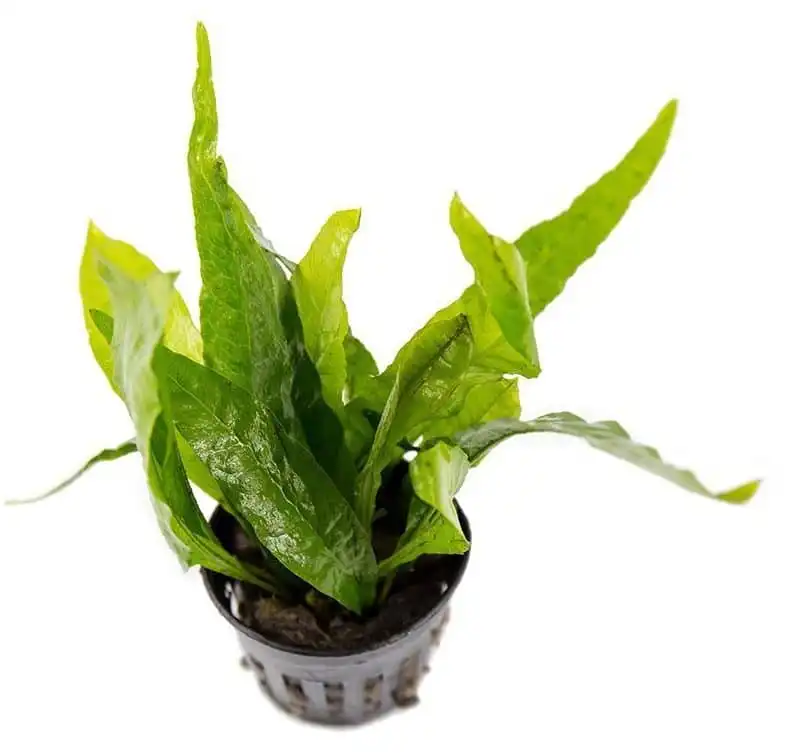
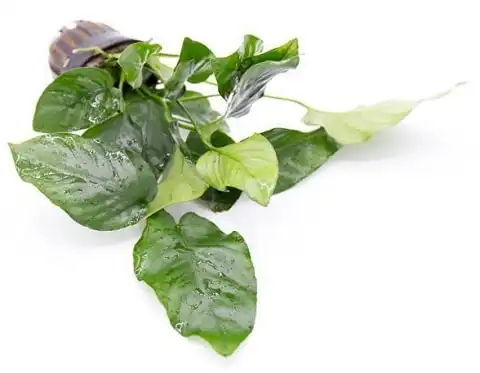

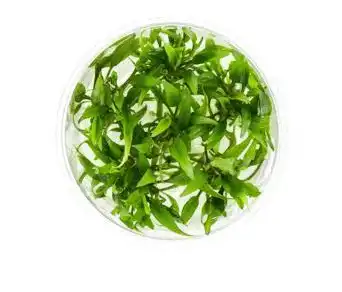
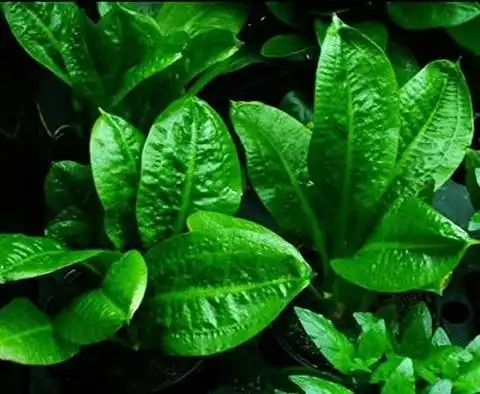
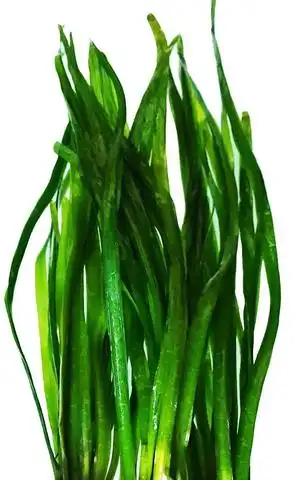

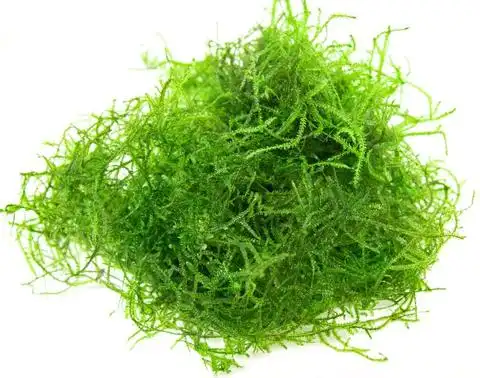
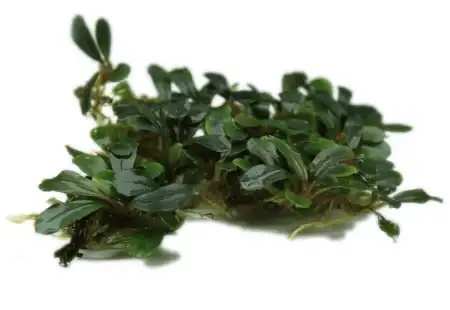
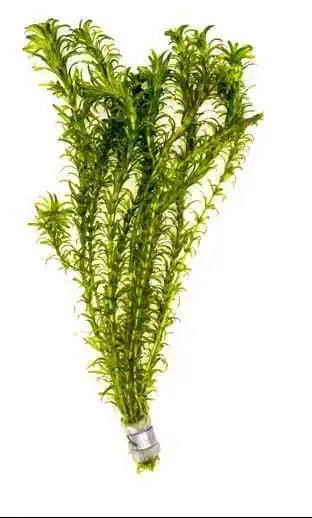







I tried to rescue 2 beta fish(separate tanks) because I hate seeing them in those small containers . I changed water to the conditioned water sold in the store and my poor beta is on the bottom having a hard time . I feel horrible and don’t know how to help him💔
Hi Gaylyn,
Did you put them in a larger tank and have you treated the water (removed the chlorine)? It’s possible if you placed the betta in a brand new tank with no established bacteria that they could be experiencing ammonia poisoning. Have you tested your water?
As a beginner setting up a betta fish bowl I appreciate all the info – very thorough and informative
Thank you for your comment Cindy ^_^
This is great info Thank you so much